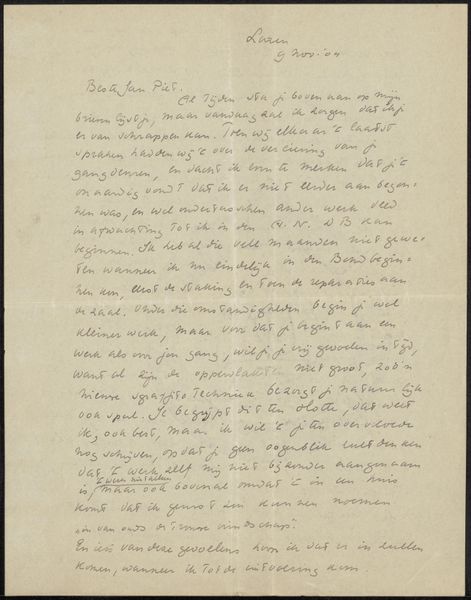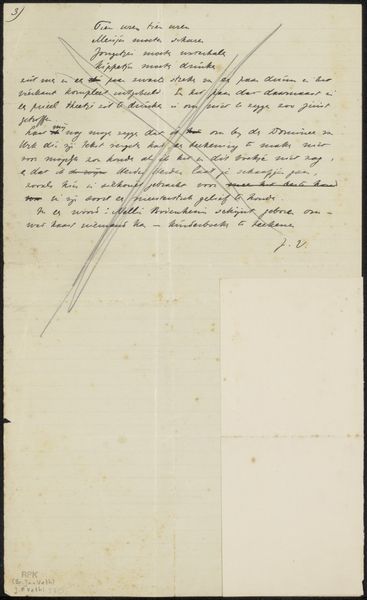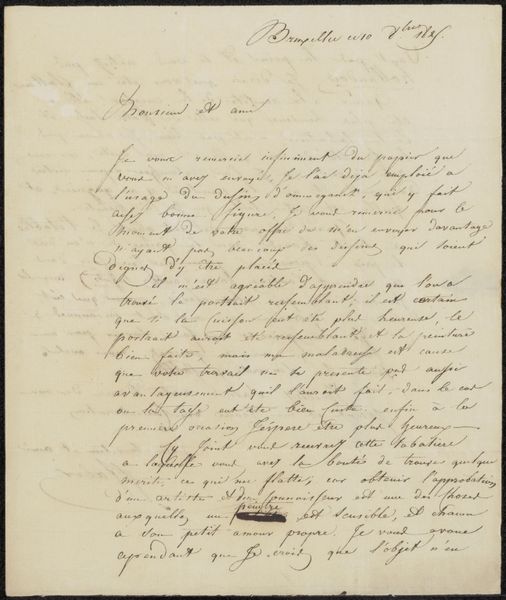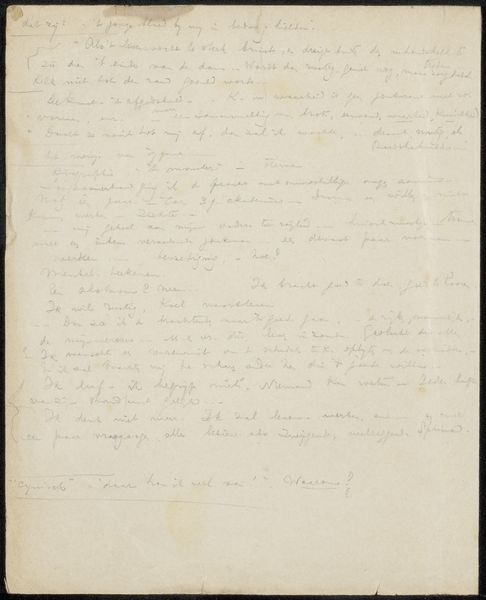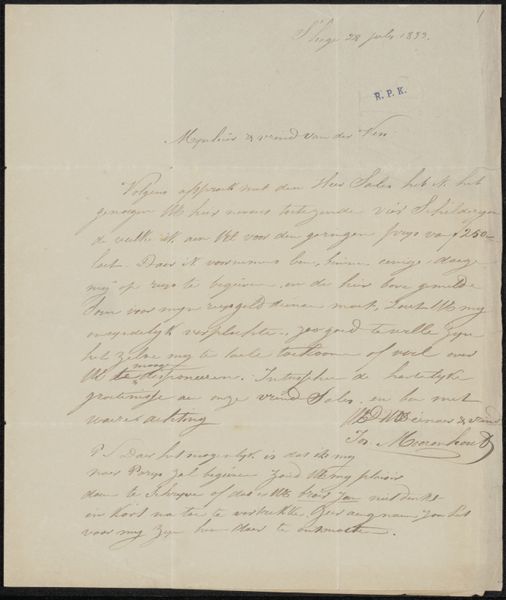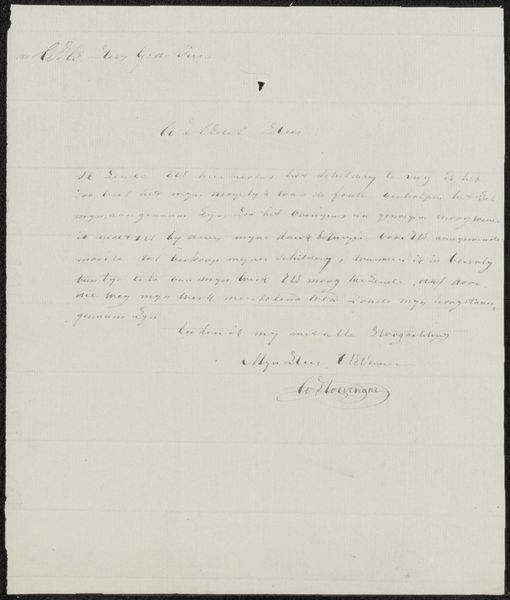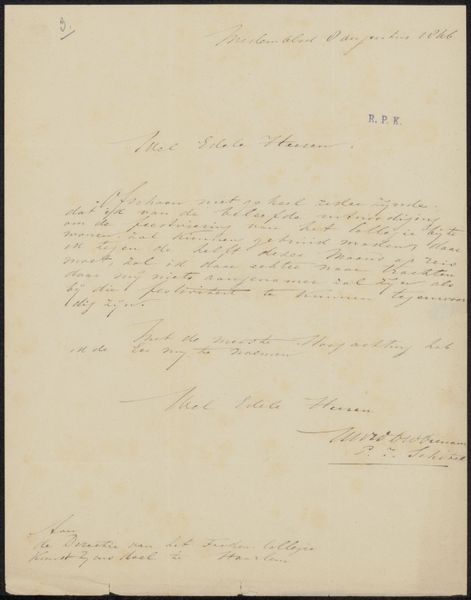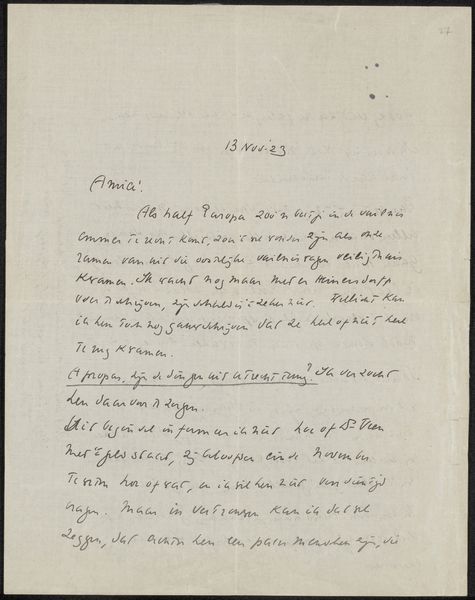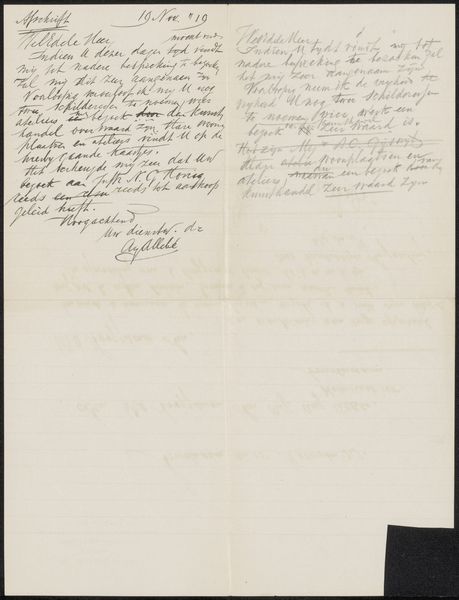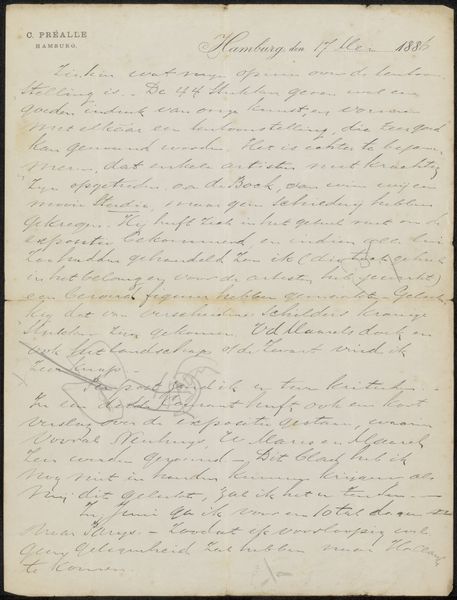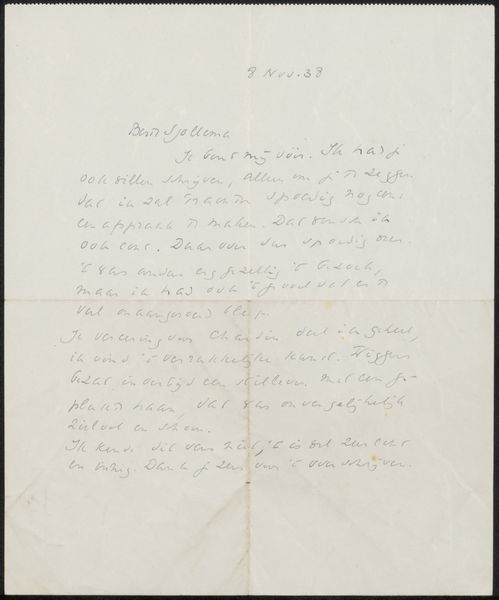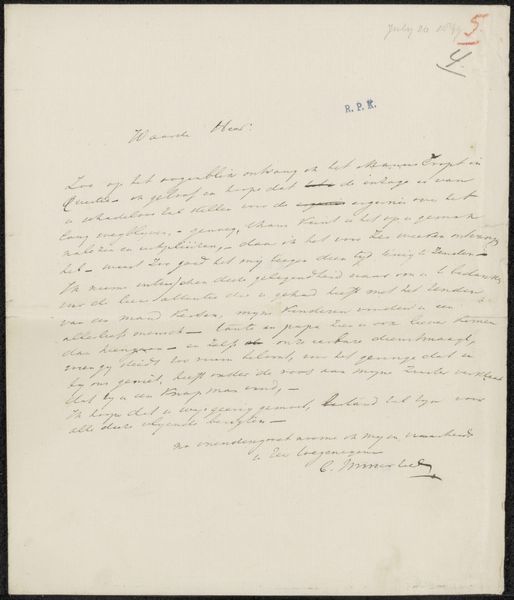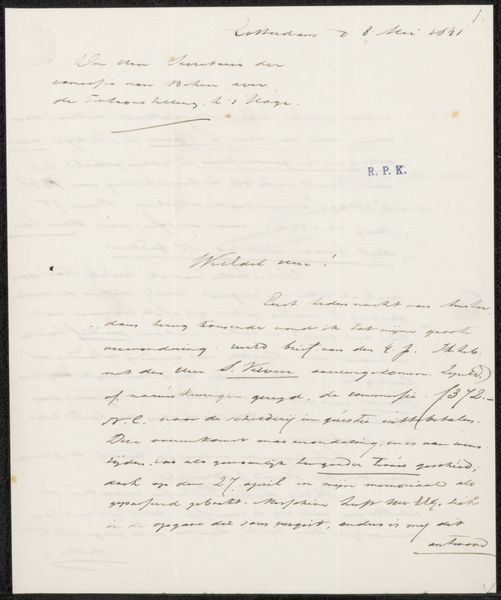
drawing, paper, ink
#
drawing
#
paper
#
ink
#
watercolor
Copyright: Rijks Museum: Open Domain
Curator: This piece, titled "Brief aan Roger C. Curtis," is an ink and paper drawing by Charles Ricketts, likely created between 1876 and 1931. It has the delicate touch of a watercolor effect too, surprisingly. It's essentially an intimate correspondence. Editor: Immediately, I sense a quiet vulnerability here. The paper appears aged, the ink faded, like a whisper across time. There is a tenderness evident just from the script alone. It suggests a moment of connection. Curator: Precisely. Look at the careful composition. The text, although a letter, has a beautiful cadence across the entire sheet. Consider how each stroke contributes to the overall structure, forming a textual, formal landscape. The slight unevenness of the paper's tone provides tonal counterpoints too. Editor: But it's also vital to consider the social context. Letters, historically, were deeply significant for political movements, queer communities, personal expression beyond prescribed gender roles. This 'brief' probably signifies shared thoughts on society and politics, with particular reference to aesthetics in his art and design practice. Curator: Certainly, the content likely addresses those ideas. The letter seems conversational; its surface appearance contains both semantic and aesthetic information. The neat rows speak to control, yet the very medium signals openness. The slightly skewed lower signature lends personality, disrupting rigid form. Editor: Beyond artistic skill, let’s think about Ricketts as an important advocate for the artists and their own unique aesthetic choices, rather than appealing to popular preferences in British society. He probably also understood the nuances of expressing those differences in a society which didn't welcome nonconformity. These messages, and their chosen styles and techniques, had specific meaning because of their time period. Curator: Your perspective brings important dimension to it. Analyzing this drawing through its materiality and form is still vital. Even simply understanding the texture and value gives rise to more appreciation than might seem apparent at first. Editor: By looking through its socio-historical place, and what it may have meant at the time for its author, the drawing gives an immediacy that cuts across over a century of changing cultural standards. Curator: That gives me a totally refreshed sense of the object myself. Thank you. Editor: Likewise. Understanding always changes through context.
Comments
No comments
Be the first to comment and join the conversation on the ultimate creative platform.
